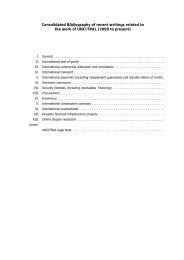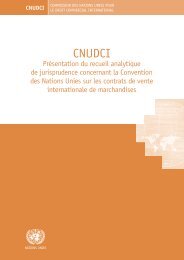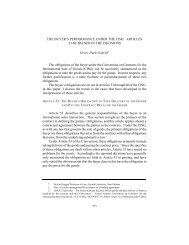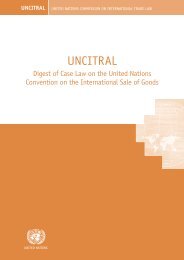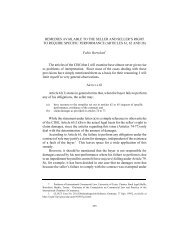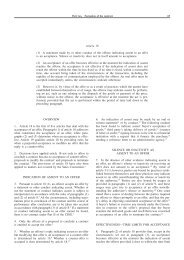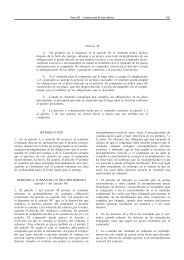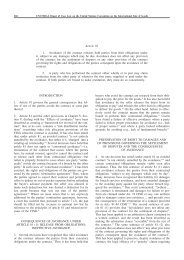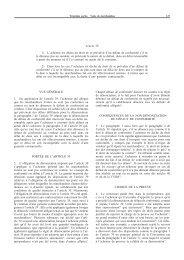Financial inclusion and poverty reduction: the role of ... - uncitral
Financial inclusion and poverty reduction: the role of ... - uncitral
Financial inclusion and poverty reduction: the role of ... - uncitral
Create successful ePaper yourself
Turn your PDF publications into a flip-book with our unique Google optimized e-Paper software.
<strong>the</strong>ir presence in areas where banks do not <strong>of</strong>fer services, combined with <strong>the</strong>ir focus<br />
<strong>and</strong> interest in creating products for low‐income consumers, creates a viable business<br />
case that is not easy for commercial banks to replicate.<br />
26. However, MFIs levy relatively high interest rates – annual percentage rates (APRs) <strong>of</strong><br />
25–70 per cent – because <strong>of</strong> <strong>the</strong> higher overheads required for servicing unsecured<br />
small loans to people on <strong>the</strong> margins <strong>of</strong> society <strong>and</strong> occasionally in remote locations.<br />
The sometimes lower cost <strong>of</strong> capital available to MFIs running as a double bottom line<br />
business through subsidized loans from private, government <strong>and</strong> multilateral lenders<br />
brings greater sustainability to <strong>the</strong> micro‐finance business model. The micro‐finance<br />
market arena is an amalgam <strong>of</strong> commercial enterprises vying with social enterprises.<br />
Even though greater competition <strong>and</strong> scale should reduce <strong>the</strong> costs <strong>of</strong> micro‐finance<br />
services, many MFIs have not translated <strong>the</strong>ir efficiency <strong>and</strong> pr<strong>of</strong>itability into lowering<br />
<strong>the</strong> costs <strong>of</strong> servicing loans. The <strong>role</strong> <strong>of</strong> Compartamos Banco in Mexico <strong>and</strong> more<br />
recently SKS in India in evolving <strong>the</strong>ir for‐pr<strong>of</strong>it businesses aroused great controversy<br />
partly because <strong>of</strong> very high interest rates. As we link remittances to <strong>the</strong> provision <strong>of</strong><br />
inclusive financial services, <strong>the</strong> issue <strong>of</strong> transparency <strong>and</strong> disclosure around <strong>the</strong> rates is<br />
vital, particularly as MFIs are empowered to provide a broad range <strong>of</strong> financial services,<br />
including through linkage to remittances, ra<strong>the</strong>r than only small loans.<br />
27. With <strong>the</strong> still very limited involvement <strong>of</strong> MFIs <strong>and</strong> banks <strong>of</strong>fering services to remitters<br />
<strong>and</strong> recipients, money transfer currently is mainly a single‐service <strong>of</strong>fering that is<br />
processed separately from mainstream financial services, even if provided by financial<br />
institutions that have o<strong>the</strong>r products. Even though micro‐finance <strong>and</strong> micro‐insurance<br />
have integral links, <strong>the</strong> “mantra” that <strong>the</strong> poor are uninsurable still persists. There are<br />
opportunities that successfully demonstrate business models to connect <strong>the</strong>se services<br />
<strong>and</strong> <strong>the</strong> combination <strong>of</strong> micro‐finance with remittances can create viable possibilities to<br />
meet <strong>the</strong> unmet needs <strong>of</strong> <strong>the</strong> poor for <strong>of</strong> microinsurance while also increasing<br />
development benefits.<br />
8



